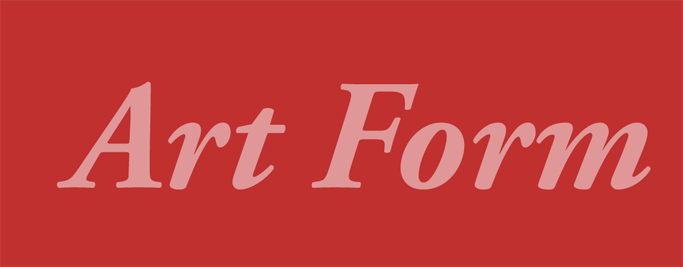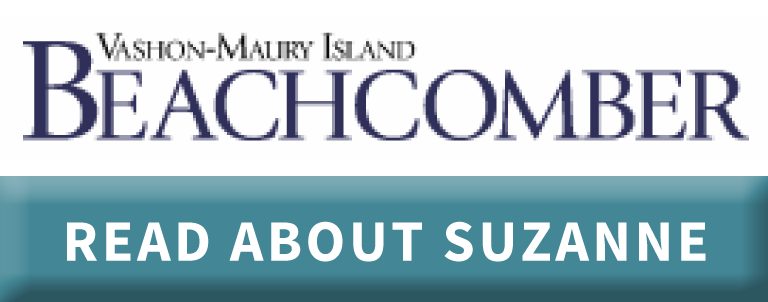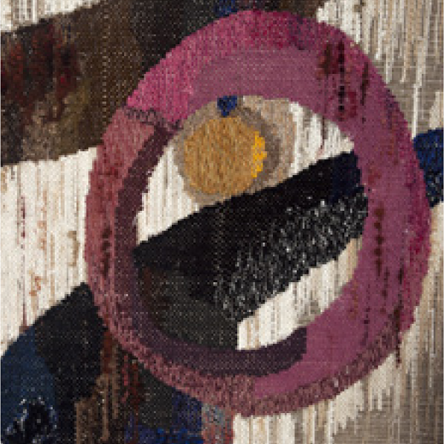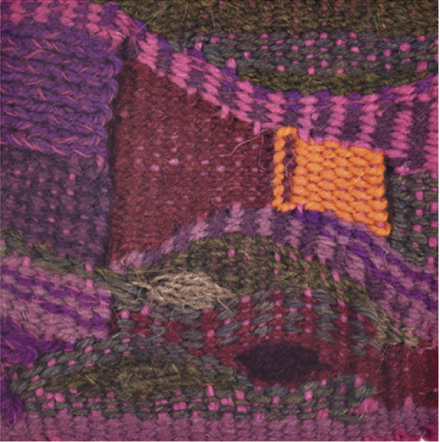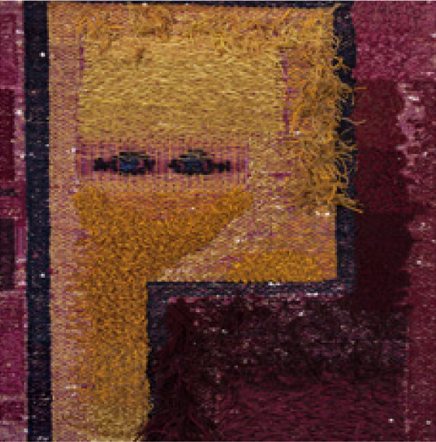The Background and the Foreground are the Same Series
Nature’s invisible fractals are like weaving patterns—when replicated, they materialize the fabrics of whole living systems. The Background and the Foreground are the Same is a work in progress and will include 9 weavings in the series. The theme of this body of work will be explored three different ways. I have organized the 9 textiles into groups of three, called Fractals. Referring to each sub-group of a whole woven exploration by this name creates a connection between the craft and an organic patterning process. Each family of weavings animates understanding of something from the unseen background with a blended expression of imagery, process, and integrative structures. Otherwise its wisdom is at risk of going unnoticed and unappreciated for the wonder it could inspire.
Fractal #1
Lifeforms are interchangeable expressions of the shared background fabric. Each is the other in disguise. The first three weavings in the series bring this theme to life. Woven images in the foreground emerge from the background grid, shared common ground. The three tapestries include a central geometric shape, reminiscent of the Chinese yin and yang symbol. It acknowledges both a weaving principle and natural tendency in Nature to embrace opposing forces, such as, the background and foreground being one and the same.
Fractal #2
A magnificent Douglas fir stands outside my studio. The tree sits atop a huge mound that its roots have elevated over the centuries. The invisible underworld of woody woven-tentacles, which include tiny webs of cilium spun by fungi, weave a subterranean system that supports the massive tree as well as its woodland environment. This family of three tapestries includes a prism motif. It refracts a full-spectrum awareness of the exchange of light-energy from above for life-energy below—the circulating process being orchestrated by the unseen organisms and their incessant weaving process.
Fractal #2: The Always-One Tree
The design for the first tapestry in Fractal 2. It is 9’ x 8’ and is currently being woven on the loom.
Note: The video Silent Oratory: A Weaver Speaks documents the setting up of The Always-One Tree tapestry.
Go to my YouTube channel:
Handwoven Storytelling from a Life that Evolves as a Whole to see the tapestry being woven.
Fractal #3
These richly patterned fabrics will bring a spotlight to the theme of Nature’s fractal patterns. Each weaving is a graphic expression of the holographic relationship between a single weaving pattern and the whole fabric it materializes when it is repeated. The message from the cloth is: the one and the many are the same. These fabrics demonstrate there is no distinction between the background of a repeated pattern, and the foreground of an integrated structure.


